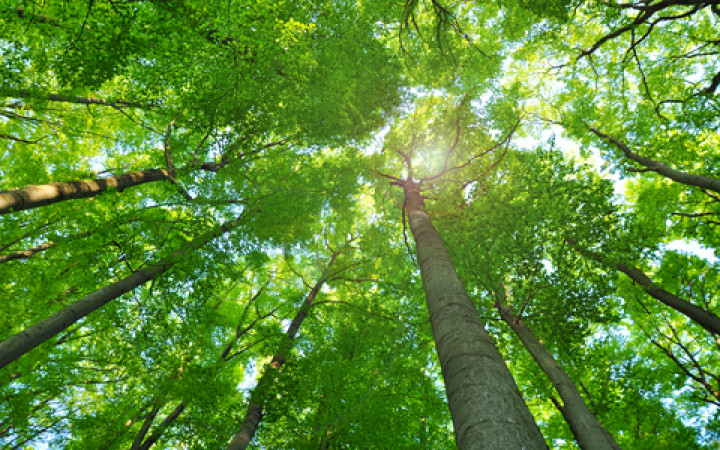Today’s Wonder of the Day was inspired by Christie. Christie Wonders, “Do trees communicate with each other?” Thanks for WONDERing with us, Christie!
You’ve probably heard of the world wide web. What about the “wood wide web?” It sounds like it might be part of a punny joke, but the wood wide web is not a punchline. It is the nickname for networks found in forests.
For many years, scientists saw trees as independent living things. Each tree in the forest was trying to get light, water, and nutrients. Trees competed for resources. But scientists are discovering that trees may actually work together—with the help of fungi.
Fungi are small living organisms. They are not plants or animals, but belong to their own Kingdom—Fungus. They break down decaying matter and use it for food. Some examples of fungi are mushrooms and molds.
In forests, fungi connect trees through underground networks. Trees’ roots branch out in all directions. The same soil is home to fungi, which can grow on and around tree roots. The fungi grow in thin threads called hyphae. As they grow, the hyphae can link to multiple trees. The fungi create webs between trees known as mycorrhizal networks.
In these networks, scientists think the trees and the fungi help one another. The trees give sugars made during photosynthesis to the fungi. The fungi get mineral nutrients, like nitrogen and phosphorus, from the soil. They share them with the tree. Scientists call this a symbiotic relationship.
The fungi in a mycorrhizal network link the trees together. Trees can share sugars, nutrients, and water with one another. For example, if a seedling is growing in a shaded area, it may not get enough sunlight for photosynthesis. However, larger trees growing around it can send sugar to the young tree’s roots through the fungi. Similarly, if a tree is dying, it might give its nutrients to the healthy trees growing around it.
Mycorrhizal networks are not always cooperative. Some plants will use the networks to take nutrients from their neighbors. Orchids will steal food from other plants. There are also plants that send toxins through the network. They want to harm plants that are competing for sunlight and water.
Trees also send messages through mycorrhizal networks. They can send chemical or electrical signals through the wood wide web. If a tree is being eaten by insects, it will send out distress signals. Similarly, when diseases attack trees, they can send out chemicals. These signals allow healthy trees to increase their defenses.
Some scientists caution that the messages between trees differ from human communication. The trees do not mean to send warnings. Instead, the trees are just responding to the attack. They send out distress signals which other plants have learned to understand.
While nicknamed the wood wide web, mycorrhizal networks are not only for woody plants like trees. Any land plants can join in these underground webs. Networks can even connect different species of plants. For example, fungi might link a tree to a flower.
Scientists think mycorrhizal networks are important for healthy forests. While the fungi are meeting their own needs, they are also helping trees to stay healthy and survive. They allow trees to become more resilient.
Trees often make people look up to see their branches brush the sky. But the next time you see a tree, look around. Then look down. Could this tree be part of a mycorrhizal network?
Standards: CCRA.R.1, CCRA.R.2, CCRA.R.4, CCRA.R.10, CCRA.L.3, CCRA.L.4, CCRA.L.5, CCRA.L.6, CCRA.SL.4, CCRA.W.3, LS1. 1, LS2.A, NCAS.CR.1




